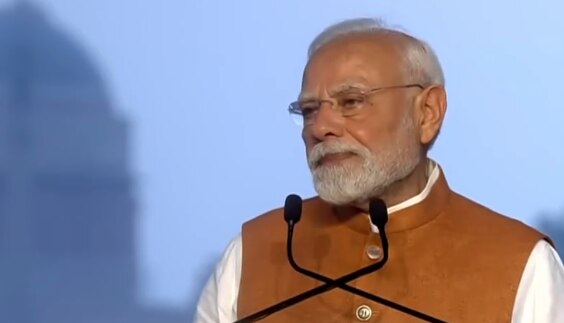https://theworldfinancialforum.com/participate/
Ministries 
Kartavya Bhavan: A New Chapter in India’s Governance and a ₹1,500 Crore Masterstroke
In a landmark moment for India’s administrative infrastructure, Prime Minister Narendra Modi recently inaugurated Kartavya Bhavan, a modern, centralized secretariat building in New Delhi. But this isn’t just another addition to India’s architecture. It represents a major policy shift toward cost efficiency, sustainability, and digital-first governance.
What stands out the most in PM Modi’s announcement is a staggering figure: the government was spending ₹1,500 crore annually on rent for ministries scattered across the national capital. With the unveiling of Kartavya Bhavan, that recurring expense is expected to drop significantly — a bold move that combines economic prudence with administrative vision.
A Costly Dispersed System
Until now, many of India’s key ministries were functioning from old, colonial-era buildings such as Shastri Bhawan, Udyog Bhawan, Krishi Bhawan, and others. Not only were these buildings outdated in terms of infrastructure and technology, but a large portion of office spaces were also leased, resulting in an annual rent burden of around ₹1,500 crore on the exchequer.
Moreover, the scattered nature of these ministries led to inefficiency in coordination, higher commute times, duplication of efforts, and outdated work environments. In an age where countries are rapidly transitioning to digital governance, India’s need for a modern, centralized administrative hub was long overdue.
Enter Kartavya Bhavan: A Smart Solution
Located in the heart of New Delhi as part of the broader Central Vista Redevelopment Project, Kartavya Bhavan is designed to consolidate multiple ministries under one roof. It’s not just about saving rent — it’s about reimagining governance in a connected, digitized, and eco-conscious India.
PM Modi, while addressing the inauguration, said:
“This new Kartavya Bhavan is not just a building — it’s a symbol of efficient governance and smart economic planning.”
With Kartavya Bhavan, the Indian government aims to bring together over 50,000 government employees into a shared, modern workspace — promoting seamless communication, faster decision-making, and digital record management.
Features That Stand Out
Kartavya Bhavan is not just architecturally impressive, but also technologically and environmentally advanced. Some of its notable features include:
🌱 Sustainability: Solar panels, rainwater harvesting, and green building certification.
💻 Digital Infrastructure: Smart offices, high-speed connectivity, paperless workflows.
♻️ Energy Efficiency: Intelligent lighting, temperature control systems, and reduced carbon footprint.
🛡️ Security and Accessibility: State-of-the-art surveillance, barrier-free access, and secure entry systems.
By investing in such a facility, the government isn’t just saving on rent — it’s investing in productivity and performance.
Part of a Larger Vision: Central Vista Redevelopment
Kartavya Bhavan is a key component of the Central Vista redevelopment, one of the most ambitious infrastructure projects in independent India. The plan includes:
The new Parliament building, already functional
Rajpath (now Kartavya Path), refurbished for public use and national ceremonies
A Central Secretariat, to unify all government offices
A modernized Prime Minister’s residence and office
A new Vice-President’s enclave
The aim is clear: to modernize India’s power corridors and align the country’s administrative functioning with its economic ambitions.
Long-Term Impact
The ₹1,500 crore saved annually is just the beginning. Here’s how Kartavya Bhavan’s impact will be felt in the long run:
📈 Higher productivity: By co-locating departments, decision-making becomes faster.
💰 Cost-effective governance: Lower rent, maintenance, and energy bills.
🌍 Environmental gains: Green infrastructure reduces emissions and sets global standards.
🔄 Future-ready workforce: The modern setup supports hybrid work, digital workflows, and upskilling.
This move aligns with PM Modi’s vision of “Minimum Government, Maximum Governance” — ensuring efficient administration with a lighter, smarter footprint.
A Symbolic Shift
The name “Kartavya Bhavan” itself carries meaning. “Kartavya” translates to “duty,” reflecting the government’s commitment to serving the nation with dedication and responsibility. In a country where symbolism carries political and cultural weight, this building isn’t just concrete and steel — it’s a message of reform and renewal.
Final Thoughts
India’s journey toward becoming a $5 trillion economy isn’t just about GDP numbers — it’s also about building the right institutions and infrastructure to support that ambition. Kartavya Bhavan is a step in that direction. It demonstrates that governance can be smart, sustainable, and financially sound — all at once.
As PM Modi continues to reshape India’s administrative and political infrastructure, Kartavya Bhavan stands tall as a beacon of transformation. It’s not just a building — it’s a statement: that New India is ready for the future.
 Government was spending Rs 1,500 crore on rent for ministries, says PM from newly unveiled Kartavya Bhavan
Government was spending Rs 1,500 crore on rent for ministries, says PM from newly unveiled Kartavya Bhavan